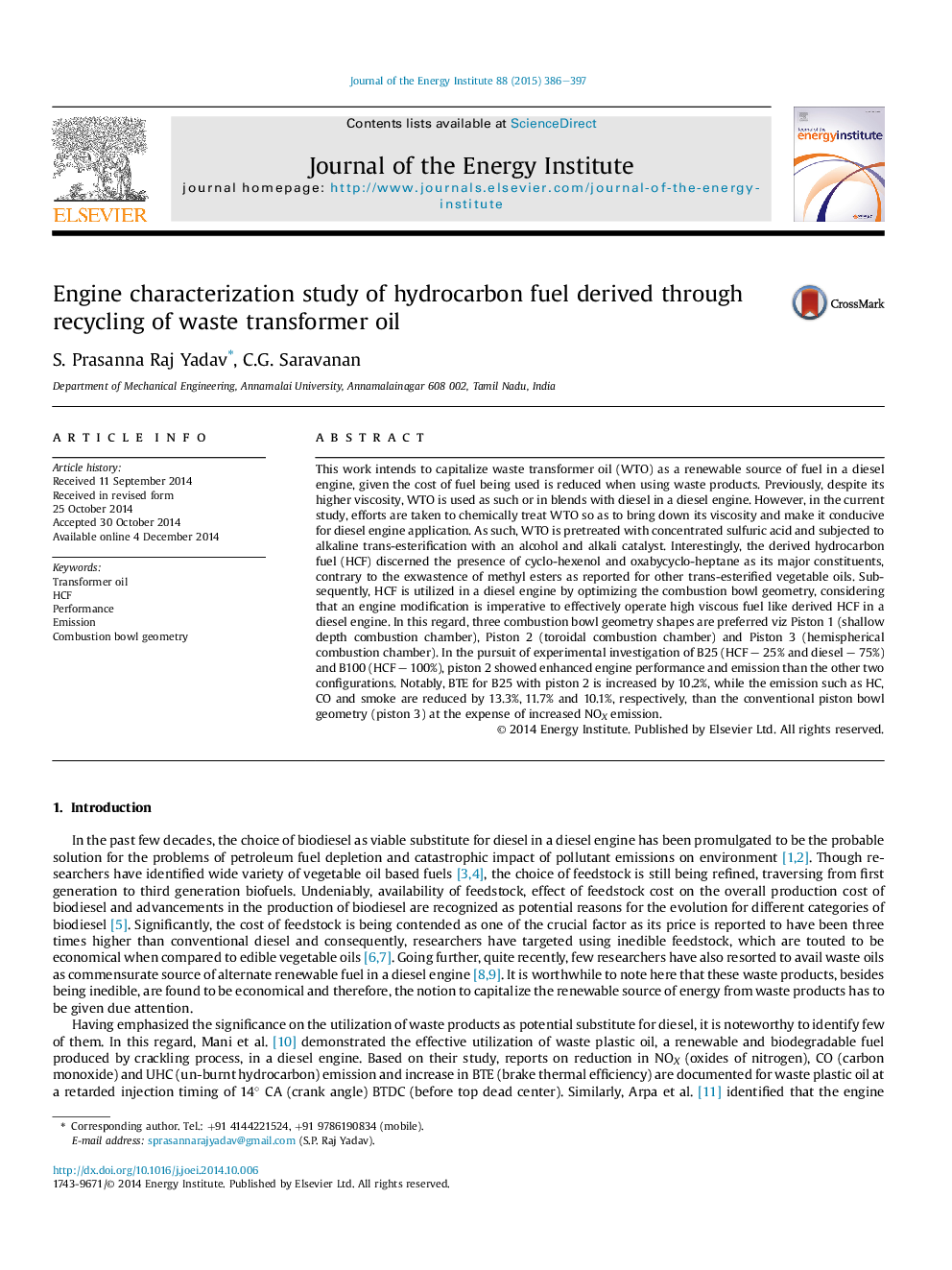| کد مقاله | کد نشریه | سال انتشار | مقاله انگلیسی | نسخه تمام متن |
|---|---|---|---|---|
| 1747610 | 1018236 | 2015 | 12 صفحه PDF | دانلود رایگان |
عنوان انگلیسی مقاله ISI
Engine characterization study of hydrocarbon fuel derived through recycling of waste transformer oil
ترجمه فارسی عنوان
بررسی خصوصیات موتور در مورد سوخت هیدروکربنی که از طریق بازیافت روغن ترانسفورماتور زباله تولید می شود
دانلود مقاله + سفارش ترجمه
دانلود مقاله ISI انگلیسی
رایگان برای ایرانیان
موضوعات مرتبط
مهندسی و علوم پایه
مهندسی انرژی
مهندسی انرژی و فناوری های برق
چکیده انگلیسی
This work intends to capitalize waste transformer oil (WTO) as a renewable source of fuel in a diesel engine, given the cost of fuel being used is reduced when using waste products. Previously, despite its higher viscosity, WTO is used as such or in blends with diesel in a diesel engine. However, in the current study, efforts are taken to chemically treat WTO so as to bring down its viscosity and make it conducive for diesel engine application. As such, WTO is pretreated with concentrated sulfuric acid and subjected to alkaline trans-esterification with an alcohol and alkali catalyst. Interestingly, the derived hydrocarbon fuel (HCF) discerned the presence of cyclo-hexenol and oxabycyclo-heptane as its major constituents, contrary to the exwastence of methyl esters as reported for other trans-esterified vegetable oils. Subsequently, HCF is utilized in a diesel engine by optimizing the combustion bowl geometry, considering that an engine modification is imperative to effectively operate high viscous fuel like derived HCF in a diesel engine. In this regard, three combustion bowl geometry shapes are preferred viz Piston 1 (shallow depth combustion chamber), Piston 2 (toroidal combustion chamber) and Piston 3 (hemispherical combustion chamber). In the pursuit of experimental investigation of B25 (HCF - 25% and diesel - 75%) and B100 (HCF - 100%), piston 2 showed enhanced engine performance and emission than the other two configurations. Notably, BTE for B25 with piston 2 is increased by 10.2%, while the emission such as HC, CO and smoke are reduced by 13.3%, 11.7% and 10.1%, respectively, than the conventional piston bowl geometry (piston 3) at the expense of increased NOX emission.
ناشر
Database: Elsevier - ScienceDirect (ساینس دایرکت)
Journal: Journal of the Energy Institute - Volume 88, Issue 4, November 2015, Pages 386-397
Journal: Journal of the Energy Institute - Volume 88, Issue 4, November 2015, Pages 386-397
نویسندگان
S. Prasanna Raj Yadav, C.G. Saravanan,
